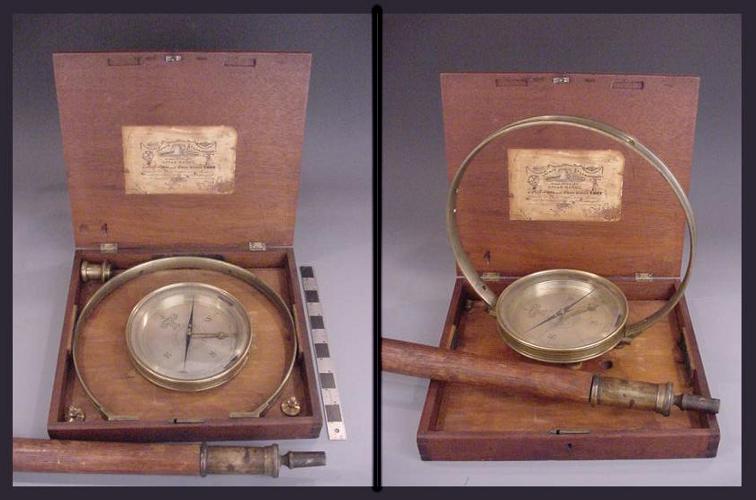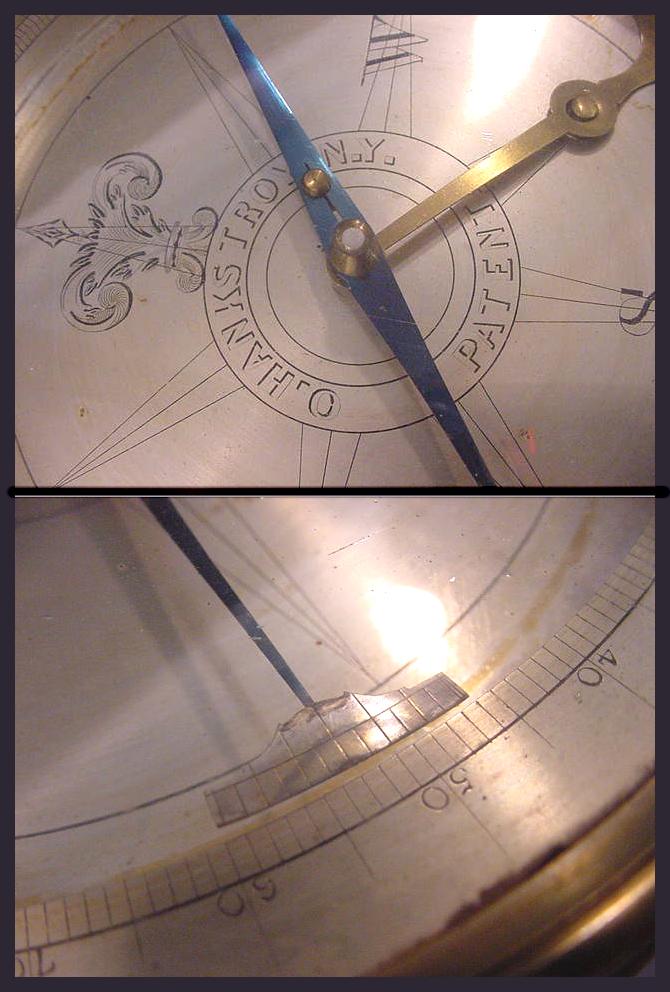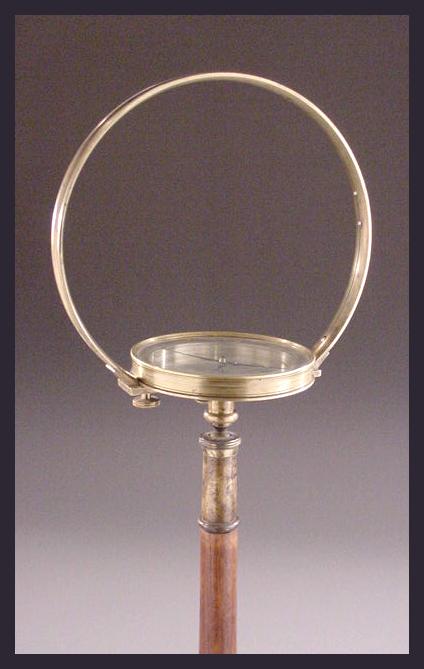| Notice: Yes this is an
expensive instrument. Terms are available: 90 days with one
third down upon closing.

A very rare example of a Troy New York sureying
instrument, circa 1840, signed by block engraving on the
silvered compass face, "O. Hanks Troy NY PATENT". The
case lid retaining an important example of an original Oscar
Hanks trade label which shows examples of his surveying
instruments and other wares.
The compass bow measures 12" in diameter; the compass
needle is 5.5" overall. The compass has two thumb screws which
hold the bow feet to the base of the compass; both of these
screws are replicated from originals. The needle ring is
cutaway to expose two bubble levels, one is lacking (but
replaceable). The compass retains an original finish
throughout including the silvered compass face. The
specialized vernier needle retains a beautiful bluing. The
original flat dovetailed walnut case has fixtures to hold the
bow, compass box and hub. The staff retains the original brass
ball & Socket joint and swaged iron point. The outfit is
complete and in very fine condition.
Possibly the most unique American compass sight vane design
is that of Troy New York maker & designer Julius Hanks.
His 1833 patent states, in part, …"The circular band with
openings therein for sight…." [Cite: Ellsworth, Henry L.,
Digest of Patents Issued by the United States from January
1790 to January 1839, Washington 1840]. The bow compass is
described, "The sights in the circumferentor instead of
rising vertical in the usual way, are in the form of a
vertical circle furnished with slots and holes which enable
the surveyor to take in elevations and depressions which
cannot be sighted by the ordinary instrument."
The term "hoop compass" was named by Charles Smart in his
book, American Surveying Instrument Makers Since 1700. He
coined the phrase prior to the discovery of early Hanks family
advertising where the term "...Bow Compass and
Circumferentor..." was advertised in the year 1835.
Additional patented and uncommon features incorporated on this
compass include the vernier needle, and the sliding weight on
the needle. Note attached to the end of the needle is s silver
vernier; this feature offered a means to divide a degree to
smaller parts (as in the rare minute compasses). The sliding
needle weight was developed to compensate for varied magnetic
dip as the compass was used in various regions.
Bow compasses were made by Oscar Hanks from 1835 to 1845
only. There are currently 11 known examples. This is the ONLY
example complete with the original staff, ball & socket
and case. The Oscar Hanks label in an important part of this
offering; the label offers valuable information by
illustrating variations of Hanks instruments and other wares;
this is the only known example of this trade label. I am
offering this instrument from my private collection; it is one
of very few American designed patent instruments, a fine
example of a Hanks Patent Bow Compass.





TERMS OF SALE:
- We offer free shipping and insurance within the
contiguous United States, by standard ground-service UPS or
standard USPS.
- We ship on Friday of each week.
- All special delivery requests, including international
shipments, are at the added expense of the buyer.
- All Objects Guaranteed as Described, and, are Sold with
a Limited Three Day Money Back Guarantee.
- Payment by Pay Pal or bankable check, required within 10
days of auction completion.
- Please email for additional images or information.
- Questions? E-mail or call (319)-895-0506 (Central Time
Zone).
- Please include lot number and title with all
correspondence.
Thank you.
|
